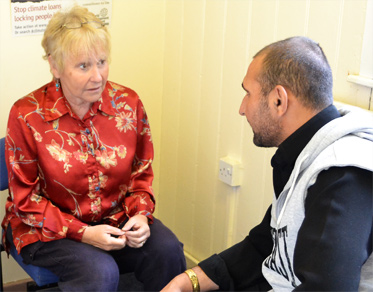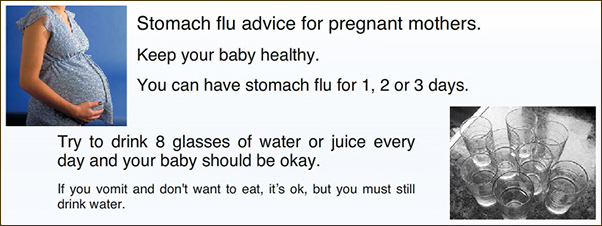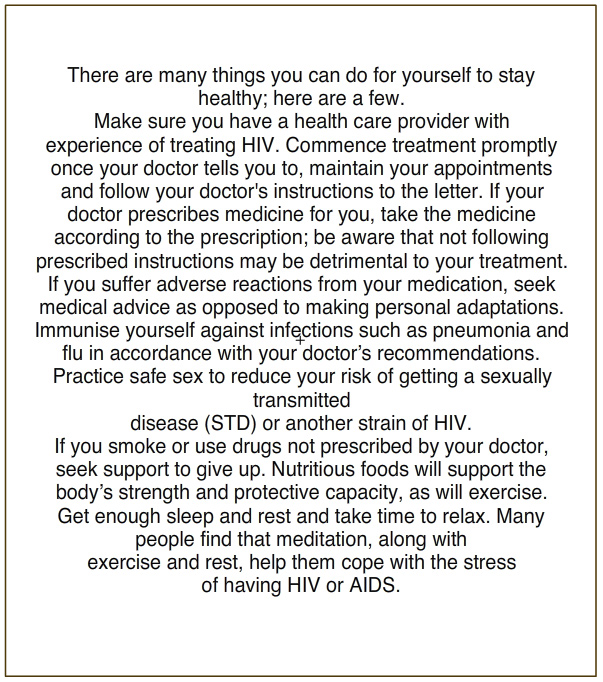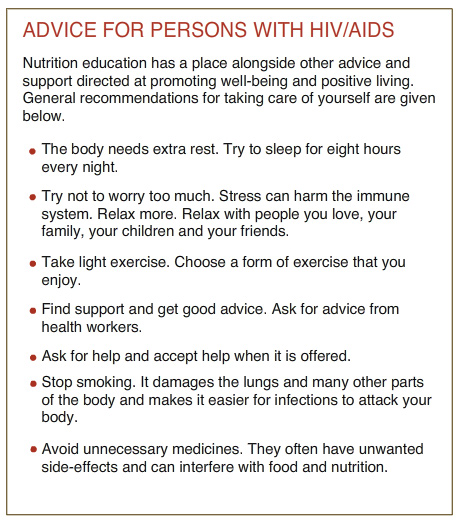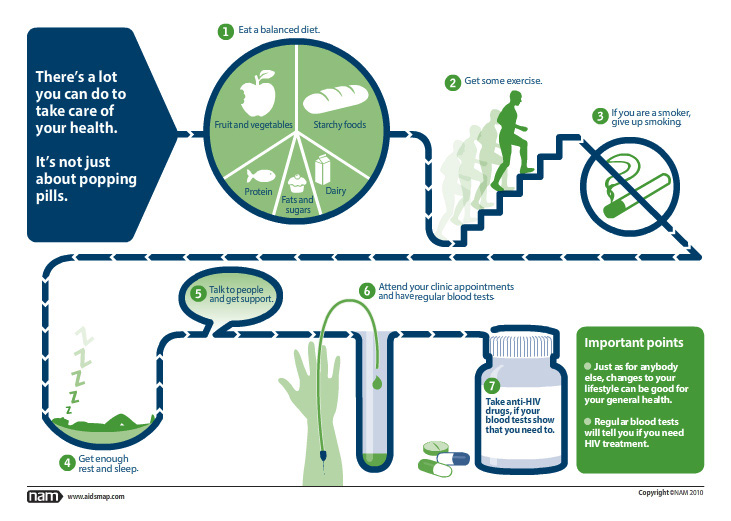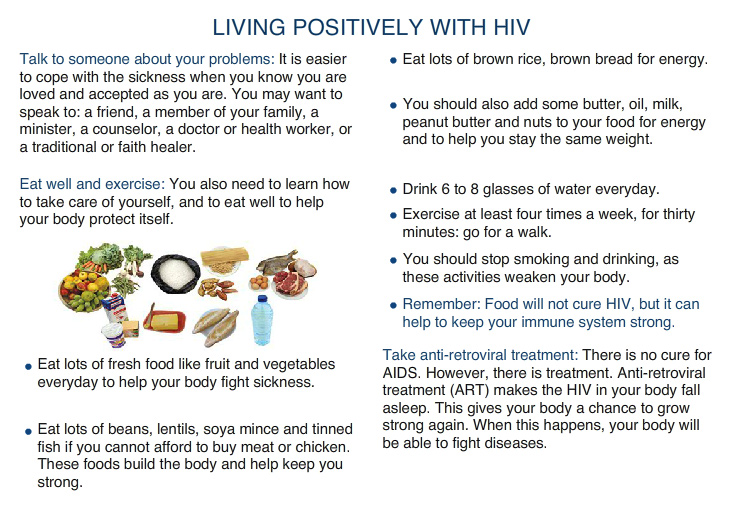Can we communicate without interpreters?
In the previous unit, we talked about the importance of using professional interpreters in clinical situations.
However, there will still be situations where no interpreter is present - for example, when making the appointment booking, in situations where the interpreter arrives late, responding to enquiries, informal conversations at community events etc.
Not having an interpreter is no reason to bring the communication to a complete halt.
Making the effort to communicate is important for the reputation of your service, for showing that your service is accessible and for building relationships and trust between yourself and the service user.
It is clear that the language issue itself will be a key difficulty in these situations, but before looking at ways to communicate, we need to identify which other issues will be impacting on the communication.
Barriers to communication
Watch the following clips. What is preventing good communication from taking place? Make a note of the barriers to good communication in each scenario, then click the button to check your answers.
Did you get the following?
Key Points:
- Disruptive background noise
- Too much information
- Speech too fast
- Colloquialisms, jargon
- Assumptions
- No visual cues in telephone conversations
- Stress and anxiety
The diagram below demonstrates the factors which hinder good communication between same language speakers. Imagine how these factors are multiplied when language is added.
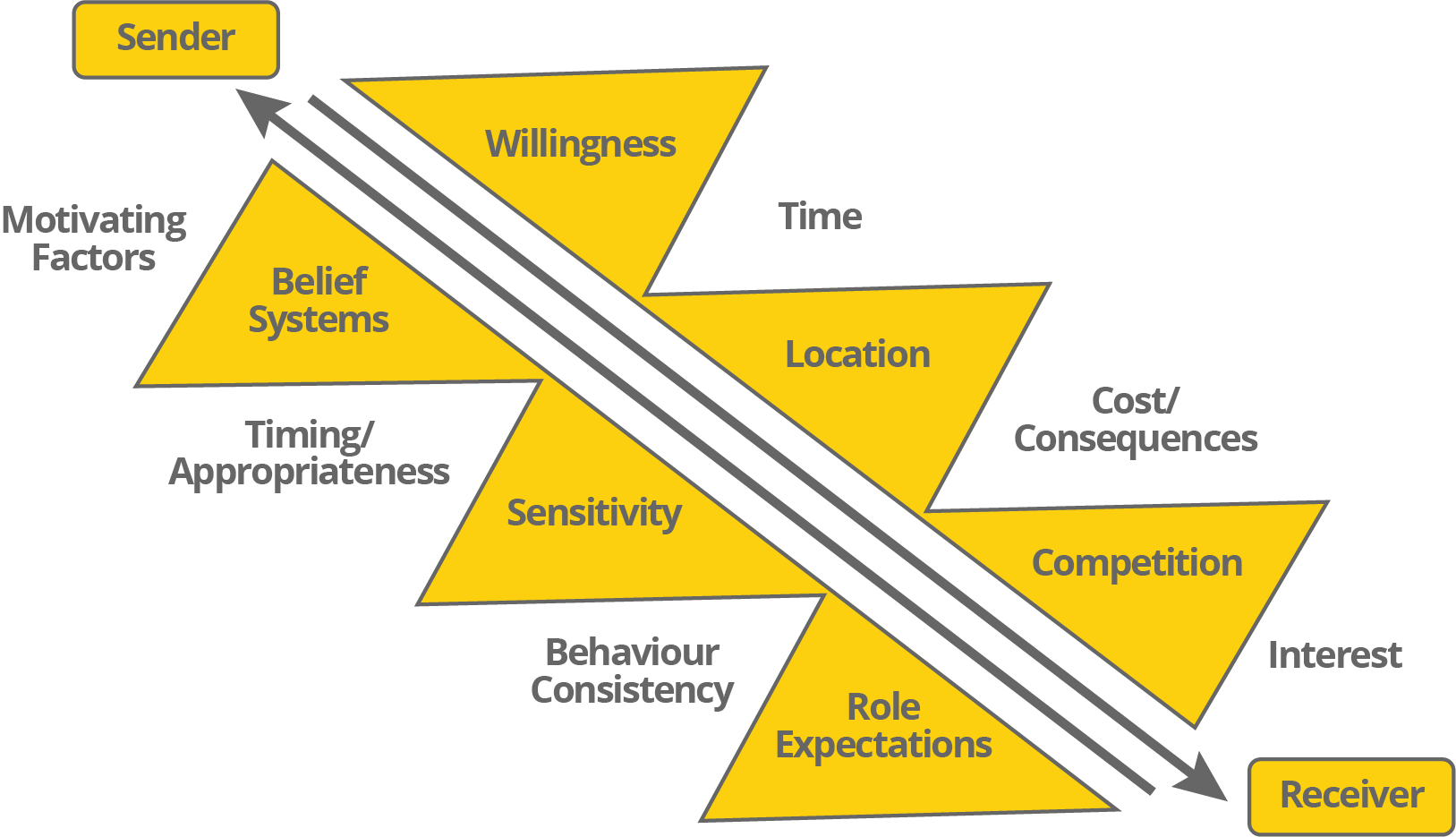
Reference: Reproduced with permission from: www.itistime.com
How is it possible to communicate with so many barriers?
The following video will present you with two sets of information. The information will be presented in a different language.
Try to work out what the person is saying and consider how you are working this out for each piece of information.
Make a note of this as you watch.
Summary
It is possible to communicate and understand basic information despite language barriers if a range of strategies are used to aid understanding.
Confidence is key to doing this well; to build confidence we need:
- to plan how to deal with the situation well
- to build a broad range of resources to help us in the moment, so there is always another way of approaching, or responding to the question
- to be aware of alternatives: what you can do if the communication fails
- to allocate time
Strategies for good communication
Strategies for communication
Click the strategies to reveal the examples:
| Speak slowly and clearly |
Leave space between words and emphasise key points by leaving space either side.
|
| Remember the non-verbal aspects |
Tone of voice, facial expressions and body language.
ie: try not to let stress show: smile, it is more likely to engage your service user and relax your own tone and body language. |
| Use visuals |
e.g. pictures to represent health topics
|
| Use props, show, demonstrate |
e.g. calendars to explain, so instead of:
“Your medicine finishes on the 18th July. You should put in a request for a repeat prescription two working days in advance” try: “Your medicine finishes on 18th July: here (show on calendar), so you need to put this white form (show) in this box (show) on this day: the 14th July (show on calendar). I’m writing Thursday 14th July here, OK?” |
| Use active rather than passive voice |
e.g. instead of:
“your arm should remain bandaged for three days” use: “keep this bandage on your arm for three days” |
| Avoid ambiguous terms |
Are there practical things your team can do to break down barriers? Key words in the patient’s first language - please, thank you, hello or goodbye - can make a real difference.
|
| No colloquialisms or jargon |
e.g. instead of:
“hop on the scales” or “hand held notes” use: “stand on the scales” or “your child’s red book." |
| Give examples of terms |
Give examples of terms - simplify - be consistent with definitions
e.g. instead of: “quadriceps” use: “the large muscle at the top of the front of your leg.” |
| Use short chunks of information |
Short, simple sentences can be understood more easily.
|
| Additional information as backup |
e.g. signposting to advice, drop-ins, community organisations, access to telephone interpreters etc.
|
| Repeat information |
Repeat but clearly show that this is repeated information, not new additional information
e.g. instead of continuing with an alternative explanation or a repetition, stop, demonstrate: “OK - again…” |
| Monitor responses and adapt |
e.g. check for signs of understanding, don’t rely on “Yes, OK” - and adapt if necessary
|
REMEMBER:
You will need to use more than one approach to aid communication, particularly with people with less English and those with less confidence. It may take some time and reassurance for the service user to respond, particularly if they feel under-confident. It will pay to persist.
Getting the message across
Exercise 1
Read the information in the box below. Think about what the key points of the message might be, then try to write down a simplified version. When you have done this, click the button below to see a better way of wording the information.
We will be hosting an informal coffee morning on Tuesday 20th April at the Wells Centre. We'll kick off at 10.30am so pop in for a brew and a chat and let the kids make the most of our new interactive play equipment!
On Tuesday 20th April, we have a meeting for families. It's at the Wells Centre.
Do you know North Road GP surgery? The Wells Centre is next to the GP surgery.
The children can play with the new toys. You can have a tea or coffee. You can talk to other families.
Come at 10.30am. You can come with a friend.
Lastly, make a list of resources that could be helpful, then click the button below.
- Paper calendar/phone calendar/diary; picture of the venue (highlighted) next to the GP surgery.
- Do you have any pictures of this kind of event? If you have pictures, refer to them as you explain.
- Clock/watch/write the numbers for the time.
Exercise 2
Simplify speech and identify resources to explain the following information. Make notes to identify the key points and write your simplified version. Consider where you could use resources or props, then click the button below to see the solution:
In the event of a serious accident or illness, we will come to your aid through the accident and emergency service. The ambulance service provides a range of services and uses a variety of vehicles, its workforce are very skilled and have a high level of medical knowledge. Please be assured that we want you to stay well during your time here and would like to assure you that if and when you need help our service will be there for you free of charge.
We work for the ambulance service. These are all ambulances.
If you are very sick - or if you have had a bad accident, we can help you. We will come to you - it is free - no money.
The medics can give you very good medical help.
Resources: images of medics, examples of emergency situations, ambulance vehicles
Exercise 3
As before, read the information below then write a simplified version, considering the key points and use of any props. Click the button below to see the solution:
Unfortunately the interpreter who was booked for your next appointment has just rung to say that she's held up and won't be able to make it for the next hour or so, at the very least. So, would you prefer to reschedule or how do you feel about holding on as we should have a slot available later.
The interpreter can't come now (indicate time on clock or by writing/drawing "3pm" and indicate "can't come" with an "X" or "no").
She can come at 4pm (indicate one hour later on clock or write 4pm next to a tick or a "yes").
Can you stay/wait here?
NB: in this situation, the interpreter could have been asked to pass the information to the patient over the phone when he/she is called.
Communication is more than giving information
The way in which we receive or invite information is also vitally important.
Imagine you are talking to your child's teacher about a concern you have regarding the school.
How would you know they were listening to you?
What signs would you be looking for? What would you not expect them to do?
Active listening requires paying attention, positive body language, the removal of competing interruptions and the provision of feedback.
It builds understanding and respect and is essential in situations where language abilities are low.
Click the images below for the dos and don'ts:
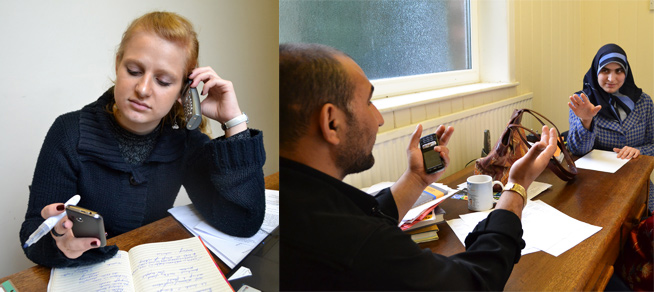
You should not:
- Fail to acknowledge that person's comments
- Stop them talking to do something else, e.g. answer phone or email
- Check your watch
- Check your diary
- Avoid eye contact
- Interrupt because you know what's coming
- Change the subject to one that interests you
- React instantly to a comment and lose your temper
Speaking on the phone
Telephone conversation
You have received a phone call from the service user who has a low level of English. You are finding it difficult to understand what they need from you and what they want to tell you.
Consider the following questions as you listen to the recorded telephone conversation below:
- What is the speaker phoning about?
- What are the chances of the speaker getting the help she needs?
- What prevented this from happening?
- What is the result?
Click the questions below to check what prevented the information being shared clearly and the impact of this:
| What is the speaker phoning about? |
Getting a doctor’s appointment for her daughter.
|
| What are the chances of the speaker getting the help she needs? |
Limited - receptionist has not responded to the mention of the caller's daughter; the caller may not come to the surgery to register.
|
| What prevented this from happening? |
The conversation was not simplified to suit the caller: there were distractions; multiple questions were asked at once; jargon and colloquialisms were used; the receptionist assumed that the caller knew how the surgery worked.
|
| What is the result? |
The daughter’s illness may go untreated, or the mother may take her to the A&E
|
To address these common issues what strategies can you use:
- In preparation before such phonecalls?
- During the call itself?
This printable telephone skills checklist gives you clear strategies to use.
Click here to view. It may be helpful to keep a printout next to your phone to refer to.
Improving health materials
Improving health materials
“how something is written is just as important as is what is written.”
Translation of materials is not always the most appropriate action as some areas have a wide range of language groups and dialects. Although well translated texts will benefit some audiences, others' needs are missed if their languages are not catered for. It is also useful to simplify English-language materials and consider the way they are presented to reach a broader audience. The adaptations are equally relevant in areas with low literacy rates and low uptake of health messages.
“… those with poor literacy skills… typically over use… emergency rooms and hospitals. They are also frequently rehospitalised for failure to correctly follow discharge and after-care instructions.”
References: Vilaine & Mayer, 2007
There are some concerns about using plain English
Are the following statements true or false?
Q1. Using plain language is dumbing down the message.
TRUE
FALSE
Q2. People will tell you if they can't read.
TRUE
FALSE
Q3. Everyone has difficulty understanding health information at some time.
TRUE
FALSE
Look at the following information about gastroenteritis. How could it be better explained in plain English?
Fortunately, gastroenteritis usually has a limited lifespan.
As long as fluid balance is maintained through adequate replacement, even complete lack of solid nourishment for a day or two won’t harm your unborn baby.
The Suitability Assessment of Materials (SAM) Tool
This tool asks 6 questions to assess information for:
- READABILITY
- USABILITY
- SUITABILITY
The questions are:
- Is the purpose and relevance clearly evident? The more relevant, the more people will want to know.
- Literacy demand. Does the writer use an active style and voice? Is the vocabulary simple and clear, without jargon? Is context for the information provided?
- Graphics. Is this information illustrated? Do the graphics match the purpose of the piece? Are they simple and straightforward without distracting elements?
- Layout and typography. Does the layout promote navigation and understanding?
- Learning stimulation. Is there motivation to learn and use the information?
- Cultural appropriateness. Is there a good cultural match between the logic, language and presentation of the document and its audience? Are the images and examples culturally appropriate?
Reference: Doak et al, 1996
Using the SAM tool and the criteria used earlier breaking verbal information into manageable, concise chunks, it is clear that the gastroenteritis information on the left will have a wider appeal. Click the image to enlarge.
It will also be easier to explain the resource to a patient particularly if accompanied by a clear visual.
Look at the flyer on the right (click to enlarge) and assess its readability, usability and suitability, according to the SAM tool:
- Purpose
- Literacy demand
- Graphics
- Layout
- Stimulation
- Appropriateness
Make notes of three practical improvements you would make.
Now look at the updated versions of the flyer below. Which is the best improved version? Click on each one to see a larger version, then click the buttons alongside to see an assessment of each.
- There is a title, so the reader can see if the information is relevant
- Improved layout: the information is broken down into bullet points for easier reading.
- The statements are short, with examples.
- The language in the bullet points is clear and jargon-free.
- The introduction still has a lot of jargon; it could be expressed more clearly.
- There are no graphics to clarify or support the information.
- There is still a lot of text; it could be shortened and laid out better.
- Clear visuals
- Clear and simple text - a useful guide to talk about the issues
- clear progression
- The term popping pills is more difficult to understand; taking pills or medication are clearer
- Language is clear and jargon-free.
- Bullet points, colour and bold text make the information easier to read.
- Picture and heading give good indication of the content.
- Large amounts of text remain; it may be daunting to someone with lower levels of English or Literacy.
- The picture of the food types only gives information about one aspect of the flyer: talking, exercise and treatment are missed out.
Now select a written text used by your service to share health information and follow the same steps. What would you change about the document and its content?
TB Alert Animation
Finally this short animation provides a good, clear example of how information may be prepared in alternative formats using clear language. Some service providers may be more familiar with information presented in this manner.
This accessible animation provides a visual guide to the most common symptoms of TB, and advises people to contact a doctor if they think they might have the illness.
Summary
- Communication without interpreters is possible and fundamental to building trust and rapport with service users.
- Interpreters play a vital role in communication, but without a commitment to engaging directly with service users, providers will not be able to build more accessible and equitable services.
- Planning and confidence are key to communicating without interpreters. The two build on each other.
- There are a range of strategies to assist in building better communication, including being clear and concise, ensuring relevance and active listening.
- Coupled with the provision of interpreters, this kind of communication can help to reach the aim of ensuring service users can make informed choices and be fully involved in their healthcare.

